Building Trust With Your Clients Through Relaxed Pose
Don’t jump right into the session and expect your subject to relax with you, a stranger. Start a conversation before you start a photograph. Once you find out what their passions are, it’s easy to spark a discussion that helps them relax. Before you start shooting, let your clients know what to expect. This is both verbal and non-verbal. Your portfolio attracted them to you in the first place. And it has already laid a foundation for what they expect during the session. Don’t be afraid to give them a few simple instructions at the start of the session. For example, let them know that they shouldn’t look at the camera unless you ask them to. As you interact before the session, be confident as you instruct them. A confident photographer, to a client, is someone that knows what they’re doing. Bumble around and the client may be less likely to relax.
How to Take Advantage of Poses That Come Naturally to Your Subject
Sometimes, I have a specific pose in mind. But often, the subject or subjects themselves will inspire the poses. I start with one almost vague instruction, such as sit here, or leaning there. I watch what the subject does without instruction first. Then I make corrections both to avoid posing errors and to enhance the pose. Sometimes, the subject will position themselves in a way that I wouldn’t have considered. This might also be better suited for their typical body language. The same applies when photographing couples. I will often ask the male to stand behind the woman and wrap his arms around her. Sometimes, the natural way he holds her works, and other times, it looks more like a choke hold. In the latter scenario, I’ll adjust the hands to a more flattering position.
Why You Should Show the Poses Yourself
If I have a specific, more complex pose in mind, I’ll often pose myself first. Posing involves the whole body. Creating a visual of the pose instead of instructing on how to hold each limb is faster. And it keeps the subject relaxed. People tend to feel less awkward when they see someone doing the same thing they are. Demonstrating the pose also makes it possible to create poses that are harder to put into words.
Keep Up Conversation Throughout the Photo Shoot
Imagine someone standing behind a camera, taking your picture, not saying a word. Long periods without conversation are awkward. That’s the last feeling you want to create when aiming for a relaxed pose. Keep up the conversation throughout the portrait session. Ask questions. Tell funny stories. Or ask them to tell you about something that they are passionate about. That doesn’t mean shy photographers can’t be successful. If you have a quieter personality, come up with a few questions ahead of time. This will make that conversation easier on you. Ask couples how they met, for example, and seniors what they like to do. Try off-the-wall questions like what one thing they’d take to a deserted island is. Or what celebrity they’d most like to meet. Another thing you can try is to compliment the subject. This creates conversation but also great expressions. Compliment their eyes, hair, smile — the features that stand out the most to you. Be careful to keep compliments appropriate. Especially if you are photographing someone of the opposite gender. Make sure the compliments don’t cross the line over into flirting (or harassment).
Ask the Subject(s) to Take a Deep Breath
Getting more relaxed poses is sometimes as simple as asking them to take a deep breath. Most people are nervous in front of the camera. A slow, deep breath can help calm some of those nerves. The action can also create more relaxed shoulders.
Give Them Something To Do
One of my favorite ways to create relaxed poses is to ask them to do something. This works particularly well with subjects that are nervous in front of the camera. An action takes their mind off the fact that they are being photographed. And it creates a movement that works well in portraits. Something as simple as taking a walk can go a long way. But there are hundreds of different “tasks” that photograph well. Try jumping or dancing. Or tell a bride to play with her veil or train. I often ask my couples to snuggle in once they are in the pose. Couples and families can also hug or tell a secret, for example.
Watch the Hands and Feet
The hands can be a big giveaway if a subject isn’t relaxed. An individual that’s tense or nervous will have flat fingers. But a relaxed person tends to have a softer curve to the hand. Look at the hands and ask them to soften or curve their fingers if they look flat or tense. Avoid having standing subjects crossing their hands in the front. This tends to create a stiff pose. Not knowing what to do with the hands is often why many people start out a portrait session a bit tense. It’s one of the most common questions that I get while taking portraits. Something as simple as telling them where to place the hands goes a long way to creating a relaxed pose. Or, even better, give them something to do with their hands. The feet (or rather, legs) are also important. Most subjects tend to stand with straight legs, which looks stiff and unnatural. Instead, add a bend for a more relaxed look. There are a few ways to approach that — one is to ask them to shift so that they are resting most of their weight on one foot. Another option is to ask them to turn one foot out at an almost 90-degree angle (great for men and women). For women, create more curves by asking them to pop a knee out or have one foot on tiptoes.
For Couples and Families, Add Touch
Body language goes even further when photographing more than one person. For families and couples, physical touch creates a connection. It makes the group or pair appear closer together. For couples, the more places the two are touching, the more intimate the image is. Aim to create at least two points of touch for couples. I ask them to hold hands, or to place their foreheads together, or I ask him to kiss her hair. This creates a more intimate pose than holding hands alone. In groups and couples poses, it’s also important to watch the distance between each person. Poses where the individuals are distant from each other creates a, well, distant look. Take the couple’s pose above where the two are facing each other holding hands, for example. Most couples will stand a foot apart or so to avoid stepping on each other’s toes. Closing that gap, which they can do by staggering the feet, will create a more intimate pose. Of course, not every couple and family express their love in the same way. Some couples, for example, may not be comfortable with the most intimate poses. This means all that effort to create a natural pose does the opposite. That’s why it’s important to chat with your photo subjects and develop a rapport. Posing isn’t a one-size-fits-all deal. If your subjects look uncomfortable, they are — and it’s time to try something else.
Why the Moment Is the Most Important
The final key to creating a natural, relaxed pose? Capturing a moment. The moment is what separates traditional posed photography from relaxed lifestyle poses. Without it, you don’t have a natural pose. Prioritising the moment means shooting even when the pose isn’t quite perfect. You might get your subject to laugh or smile and their position changes from the original plan. Don’t interrupt the moment to change pose. Expression trumps the perfect placement of hands and feet every time. Sometimes, those moments happen (particularly when working with several subjects). Other times, you have to help create them. That’s where giving them something to do, having a conversation or offering a compliment comes in. Asking someone to keep a straight face and not smile as long as possible tends to end up in laughing fits. Especially with groups. For couples, I will ask them to snuggle into each other, to kiss, or to dance. I will also encourage conversation between the two of them instead of only with me. Try asking them to compliment each other.
Conclusion
There are many different ways to create a natural, relaxed pose. But relaxed poses all tend to have several things in common. Relaxed hands, casual feet and connection between couples and families go a long way. Paired with how you interact with the couple and waiting for, or creating, a moment natural posing helps turn a portrait into a memory. Looking for more photoshoot ideas? Check out our new post about valentines day photoshoot ideas next!

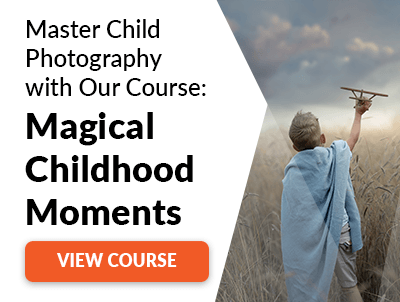

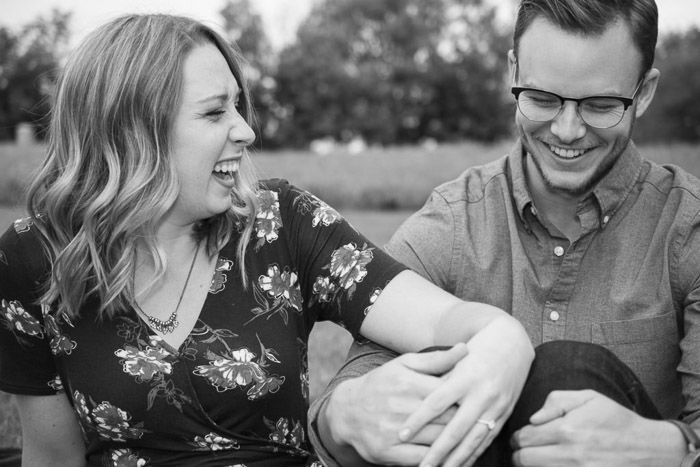
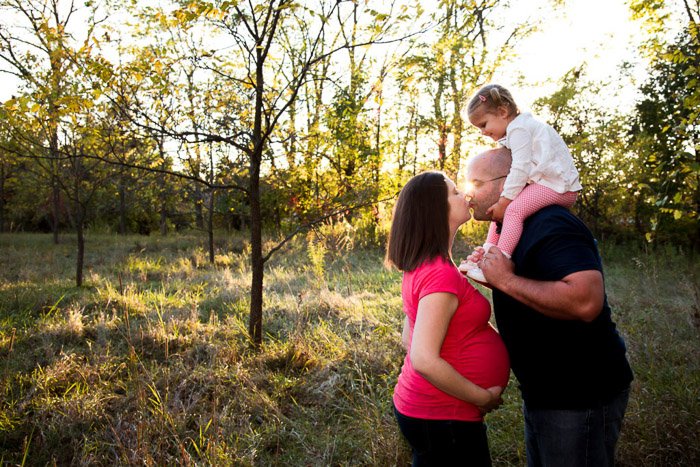
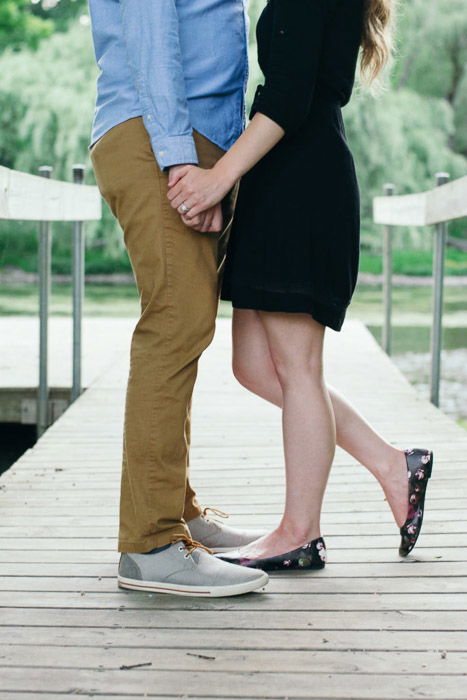
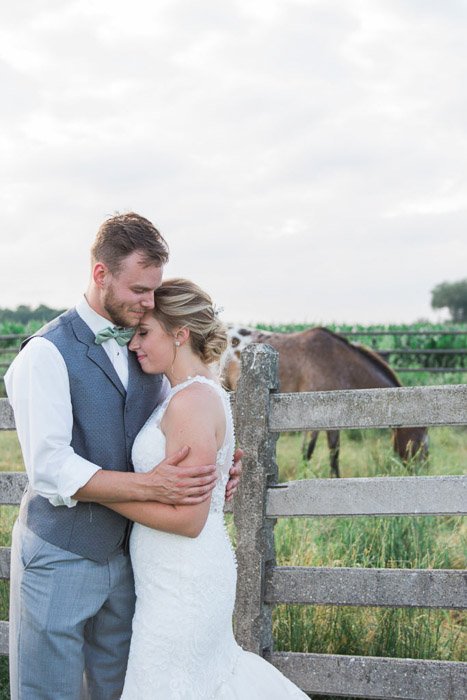
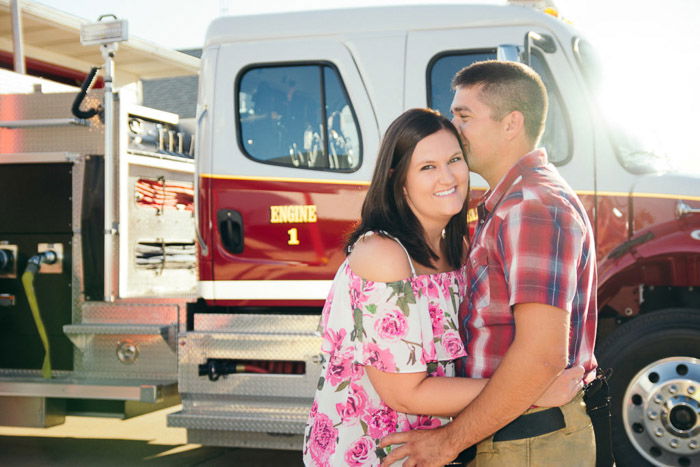
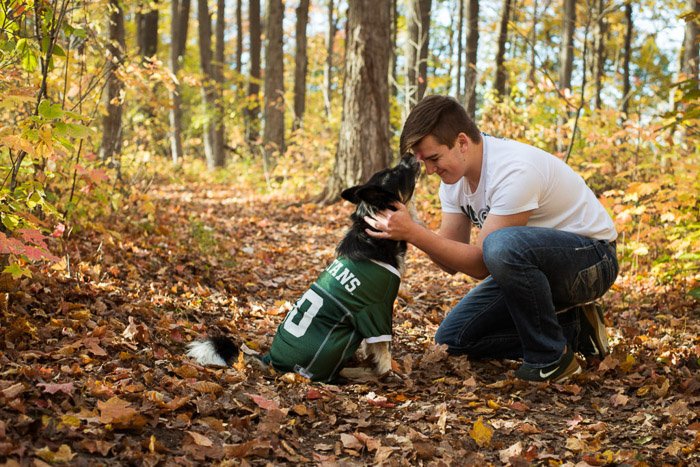
title: “9 Relaxed Poses Tips For Natural Photoshoots” ShowToc: true date: “2023-02-21” author: “Roselyn London”
Building Trust With Your Clients Through Relaxed Pose
Don’t jump right into the session and expect your subject to relax with you, a stranger. Start a conversation before you start a photograph. Once you find out what their passions are, it’s easy to spark a discussion that helps them relax. Before you start shooting, let your clients know what to expect. This is both verbal and non-verbal. Your portfolio attracted them to you in the first place. And it has already laid a foundation for what they expect during the session. Don’t be afraid to give them a few simple instructions at the start of the session. For example, let them know that they shouldn’t look at the camera unless you ask them to. As you interact before the session, be confident as you instruct them. A confident photographer, to a client, is someone that knows what they’re doing. Bumble around and the client may be less likely to relax.
How to Take Advantage of Poses That Come Naturally to Your Subject
Sometimes, I have a specific pose in mind. But often, the subject or subjects themselves will inspire the poses. I start with one almost vague instruction, such as sit here, or leaning there. I watch what the subject does without instruction first. Then I make corrections both to avoid posing errors and to enhance the pose. Sometimes, the subject will position themselves in a way that I wouldn’t have considered. This might also be better suited for their typical body language. The same applies when photographing couples. I will often ask the male to stand behind the woman and wrap his arms around her. Sometimes, the natural way he holds her works, and other times, it looks more like a choke hold. In the latter scenario, I’ll adjust the hands to a more flattering position.
Why You Should Show the Poses Yourself
If I have a specific, more complex pose in mind, I’ll often pose myself first. Posing involves the whole body. Creating a visual of the pose instead of instructing on how to hold each limb is faster. And it keeps the subject relaxed. People tend to feel less awkward when they see someone doing the same thing they are. Demonstrating the pose also makes it possible to create poses that are harder to put into words.
Keep Up Conversation Throughout the Photo Shoot
Imagine someone standing behind a camera, taking your picture, not saying a word. Long periods without conversation are awkward. That’s the last feeling you want to create when aiming for a relaxed pose. Keep up the conversation throughout the portrait session. Ask questions. Tell funny stories. Or ask them to tell you about something that they are passionate about. That doesn’t mean shy photographers can’t be successful. If you have a quieter personality, come up with a few questions ahead of time. This will make that conversation easier on you. Ask couples how they met, for example, and seniors what they like to do. Try off-the-wall questions like what one thing they’d take to a deserted island is. Or what celebrity they’d most like to meet. Another thing you can try is to compliment the subject. This creates conversation but also great expressions. Compliment their eyes, hair, smile — the features that stand out the most to you. Be careful to keep compliments appropriate. Especially if you are photographing someone of the opposite gender. Make sure the compliments don’t cross the line over into flirting (or harassment).
Ask the Subject(s) to Take a Deep Breath
Getting more relaxed poses is sometimes as simple as asking them to take a deep breath. Most people are nervous in front of the camera. A slow, deep breath can help calm some of those nerves. The action can also create more relaxed shoulders.
Give Them Something To Do
One of my favorite ways to create relaxed poses is to ask them to do something. This works particularly well with subjects that are nervous in front of the camera. An action takes their mind off the fact that they are being photographed. And it creates a movement that works well in portraits. Something as simple as taking a walk can go a long way. But there are hundreds of different “tasks” that photograph well. Try jumping or dancing. Or tell a bride to play with her veil or train. I often ask my couples to snuggle in once they are in the pose. Couples and families can also hug or tell a secret, for example.
Watch the Hands and Feet
The hands can be a big giveaway if a subject isn’t relaxed. An individual that’s tense or nervous will have flat fingers. But a relaxed person tends to have a softer curve to the hand. Look at the hands and ask them to soften or curve their fingers if they look flat or tense. Avoid having standing subjects crossing their hands in the front. This tends to create a stiff pose. Not knowing what to do with the hands is often why many people start out a portrait session a bit tense. It’s one of the most common questions that I get while taking portraits. Something as simple as telling them where to place the hands goes a long way to creating a relaxed pose. Or, even better, give them something to do with their hands. The feet (or rather, legs) are also important. Most subjects tend to stand with straight legs, which looks stiff and unnatural. Instead, add a bend for a more relaxed look. There are a few ways to approach that — one is to ask them to shift so that they are resting most of their weight on one foot. Another option is to ask them to turn one foot out at an almost 90-degree angle (great for men and women). For women, create more curves by asking them to pop a knee out or have one foot on tiptoes.
For Couples and Families, Add Touch
Body language goes even further when photographing more than one person. For families and couples, physical touch creates a connection. It makes the group or pair appear closer together. For couples, the more places the two are touching, the more intimate the image is. Aim to create at least two points of touch for couples. I ask them to hold hands, or to place their foreheads together, or I ask him to kiss her hair. This creates a more intimate pose than holding hands alone. In groups and couples poses, it’s also important to watch the distance between each person. Poses where the individuals are distant from each other creates a, well, distant look. Take the couple’s pose above where the two are facing each other holding hands, for example. Most couples will stand a foot apart or so to avoid stepping on each other’s toes. Closing that gap, which they can do by staggering the feet, will create a more intimate pose. Of course, not every couple and family express their love in the same way. Some couples, for example, may not be comfortable with the most intimate poses. This means all that effort to create a natural pose does the opposite. That’s why it’s important to chat with your photo subjects and develop a rapport. Posing isn’t a one-size-fits-all deal. If your subjects look uncomfortable, they are — and it’s time to try something else.
Why the Moment Is the Most Important
The final key to creating a natural, relaxed pose? Capturing a moment. The moment is what separates traditional posed photography from relaxed lifestyle poses. Without it, you don’t have a natural pose. Prioritising the moment means shooting even when the pose isn’t quite perfect. You might get your subject to laugh or smile and their position changes from the original plan. Don’t interrupt the moment to change pose. Expression trumps the perfect placement of hands and feet every time. Sometimes, those moments happen (particularly when working with several subjects). Other times, you have to help create them. That’s where giving them something to do, having a conversation or offering a compliment comes in. Asking someone to keep a straight face and not smile as long as possible tends to end up in laughing fits. Especially with groups. For couples, I will ask them to snuggle into each other, to kiss, or to dance. I will also encourage conversation between the two of them instead of only with me. Try asking them to compliment each other.
Conclusion
There are many different ways to create a natural, relaxed pose. But relaxed poses all tend to have several things in common. Relaxed hands, casual feet and connection between couples and families go a long way. Paired with how you interact with the couple and waiting for, or creating, a moment natural posing helps turn a portrait into a memory. Looking for more photoshoot ideas? Check out our new post about valentines day photoshoot ideas next!








